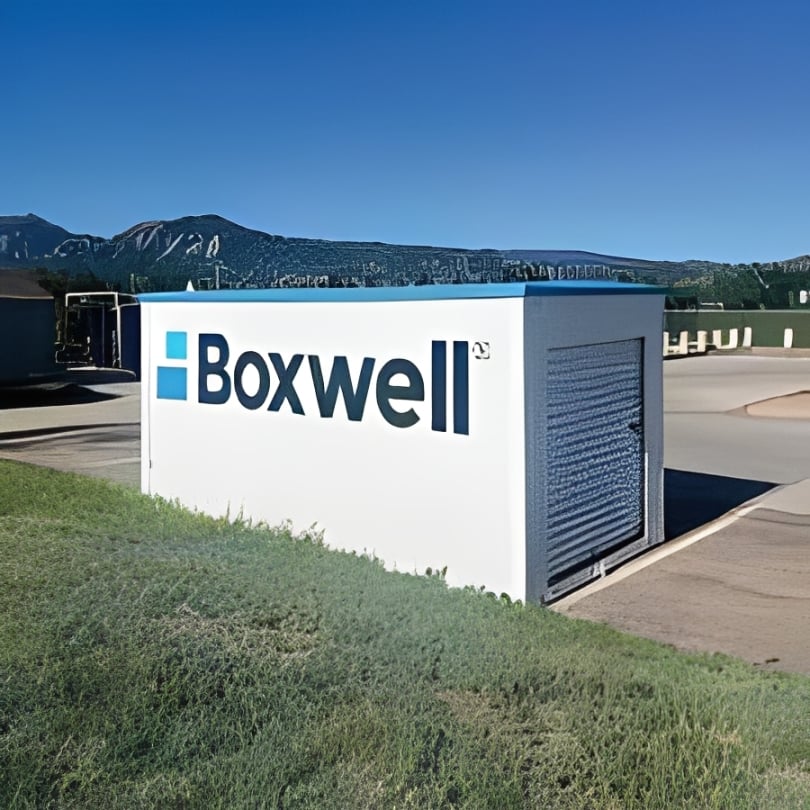Winds Of Change
How Success Is Impacting The Market
At mid-year 2017, the self-storage transaction market remained brisk, with many brokers and buyers predicting the number of transactions could equal the same volume as the very busy 2016. That doesn’t mean the market hasn’t changed in a year. In some regards, self-storage could be at an inflection point, where modulating operating conditions could reflect a different market going forward.
Although the volume of transactions remains strong, the total value of deals is expected to decline substantially from 2016. The two most apparent reasons for this are a lack of portfolios that have come to the market this year and a conservative turn by the self-storage real estate investment trusts.
Portfolio Marketplace
Self-storage had an “unbelievable” year last year with $6 billion in sales transactions, says Nicholas Malagisi, national director of self-storage and a senior advisor at SVN/Commercial Realty in Buffalo. “This year, we haven’t had any large portfolio sales, so the annual volume could be half.”
There are two theories about the difference. First, so many portfolios have changed hands over the past few years that fewer are left. “There are not that many portfolio owners, and many who had been portfolio owners have sold over the last 24 to 36 months,” notes Joel Deis, national director with Marcus & Millichap’s National Self Storage Group in Seattle.
The second theory centers on REITs, which were the biggest portfolio buyers of the past few years. Self-storage REITs have become more conservative about deal making. “In the past two years, we had a high level of portfolio sales activity. That has slowed and will continue to slow,” says Greg Wells, a senior director at Cushman & Wakefield’s Self Storage Practice Group in San Diego. “That’s because the REITs have become more selective in what they are looking to buy and how they are underwriting. There were so many quarters of double digit, year-over-year, same-store NOI (net operating income), but those numbers have now slowed, so the REITs are more conservative in the underwriting.”
One kind of deal that may still work regarding portfolios are hybrids, where four or five properties are offered for sale, two cash flowing and two or three that are lease-ups. “If the portfolio is located in the right market, the REITs would bite,” says Steve Mellon, lead of JLL’s National Self Storage Team in Houston.”
Certificate-Of-Occupancy And Lease-Up Deals
This new conservativeness–some might call it wariness–on the part of the REITs has also affected another part of the self-storage transactional market, the Certificate-of-Occupancy (CofO) deals, where a new development is put on the market as soon as it gets its CofO. Again, the REITs were the main buyers until this year. “The REITs were the most aggressive buyers a year ago but have backed off because returns became too dilutive to their stock; they had to reign in their CofO acquisitions,” says Mellon.
Bill Alter, a managing director at Rein & Grossoehme Commercial Real Estate’s Self Storage Group in Phoenix, has been trying to sell a CofO deal in Tucson, but he has been running into roadblocks. “I’ve spoken to every REIT that ever bought one, but they are all pulling back in Arizona. The REITs are concerned with the prospects of the market being overbuilt; they are not doing these CofO deals like they used to.”
This is part of the REITs new conservatism. According to Alter, there were 27 self-storage transactions in Arizona in 2016; by 2017 mid-year, 14 sales were tracked in Phoenix and one in Tucson, meaning the market was running ahead of where it was this time the year before. For better or worse, another 45 self-storage developments are sitting in the pipeline.
“Although Maricopa County is the fastest growing county in the country, this state has a history of violent market swings and we can go from the best market in United States to the worst market in less than year,” says Alter. “There is a lot of new construction here, which is one reason why there are so many deals; owners are looking to pull some chips off the table and buyers are looking at current cash flow. This is a great time to get out.”
So, is the CofO market dead? Not at all. “We are seeing more of these types of deals hit the market,” says Mellon. “This time around the buyers have changed; it’s the private equity players who are most active in the game.”
Except, the private equity buyers have different needs. “A lot of these developers were expecting to sell on aggressive pro forma cap rates, targeting 6.5 percent or seven percent,” says Mellon. “The private equity sources are saying, ‘we like this product, too, but we just can’t pay that,’ preferring seven percent to 7.5 percent pro forma cap rates. The private equity players are probably 10 percent more conservative with their valuation. A CofO deal that was worth $12 million to a REIT might only be worth $11 million to XYZ private equity firm.”
It’s not just CofO deals; development and lease-up transactions in general are getting harder to sell. “I had a lease-up deal in a strong market that I took off the market, because the people that bid did not bid aggressively at all,” says Malagisi. “The owner said, ‘the heck with this, we’ll bring it to the market later this year or next’.”
Malagisi also represented a seller in the Midwest, who had two properties in lease-up that he wanted to sell. “I raised the cap rate on the two projects by 200 to 250 bps [basis points],” he says. “I don’t think the seller will be happy. That means he will have to build it himself or take in a joint-venture partner, which is what I recommended from the beginning.”
In addition to all that, the banks are turning more cautious on new development. “I just spoke with a gentleman who was working with a prominent national lender, one of the Small Business Association lenders that the industry turns to for new construction loans,” says Malagisi. “The interest rate quoted was seven percent. Our industry hasn’t seen a seven percent construction loan in several years.”
All this will put pressure on those interested in new projects. Or, if a loan developer has already received approvals for new self-storage development, he or she might look to joint venture or sell instead of staying in for the duration.
Change Of Seasons
“There is no shortage of people who want to sell, but there is a shortage of people who want to sell and have a real understanding of the market,” notes Aaron Swerdlin, an executive managing director with Newmark Grubb Knight Frank in Houston.
Swerdlin believes the self-storage transactional market has already begun to change, but not all participants have caught on. Sellers are still expecting record valuations despite signs the market may have plateaued.
Operationally, says Swerdlin, street rate growth had begun to decelerate, maybe not across the board, but if the average was eight percent to 10 percent, now growth is two percent to four percent. In addition, occupancies are not so robust and there are concerns about new supply.
“A big piece of this is that self-storage market has been lulled by performance levels that were not sustainable,” says Swerlin.
Here’s the problem: Competence has overtaken the market. The mom and pops have pulled a lot of the levers that the institutional folk have already done. When investors bought an asset in 2014, there was upside in income, upside in rental rates on existing tenants, and there was probably upside on street rates, occupancy, and tenant insurance. Now, most of the mainstream software products have some level of revenue management tools built in, so mom and pop owners are getting more out of existing tenants than they ever had before. Generally, the industry is smarter about street rates; so, if an investor now buys an asset, there is not quite enough juice in the street rate. Everyone has become more aggressive about tenants paying late fees.
As for tenant insurance, deals were being done in 2013 where the seller had never offered tenant insurance. A competent buyer could assume that within a year of a new acquisition, tenant insurance penetration would hit in the low 70 percent to low 80 percent range. For awhile, tenant insurance was sometimes as much as 40 bps of internal rate of return. Today, everyone has some level of insurance.
“The industry is operating better than it ever operated before and everyone is getting that,” says Swerdlin. “When the REITs underwrite a deal, all that value they were assuming made that cap rate look really low, but really they were giving value for what they knew they could harvest relatively soon after acquisition. Well, it’s already there. Now the seller has a revenue stream and there is just not much you can do to boost it. The industry is a victim of its own success.”
A Fleeting Market
So, what is selling? There is plenty of deal making left because a lot of what had been selling was the higher ticket items, the $10 million and up transactions, whether it was a one-off or a portfolio, observes Deis. “However, the $2 million to $7 million deal is the self-storage market sweet spot and is why I’m really bullish on that tranche this year for Marcus & Millichap,” he says.
The main buyers are non-REITs.
“I have a team here and over half of what they do are with buyers who are in 1031 Exchanges,” Deis continues. “You get a lot of one-off deals. What’s interesting is that you have some emerging buyer pools, people who might be selling other assets and purchasing self-storage for all the reasons people liked self-storage over time. It is not necessarily the management, but it is the capital intensiveness of the asset. If I’m moving a storage tenant out, what do I have to do? If they took all their stuff then I’m using a dustpan and a broom. If I have a multifamily asset and someone had been living there for a length of time then paint, carpet cleaning, all that stuff needs to be done.”
Kate Spencer, a managing director and Practice Group Leader of Self Storage Valuation & Advisory at Cushman & Wakefield in Dallas, notes, other types of institutional investors have taken the place of REITs. “There is still a lot of money that needs to be placed and these investors are looking for deals that make sense.”
The big change Spencer has observed is a move of capital toward secondary and tertiary self-storage markets. “I have seen more interest in the B and C deals because there is nothing available in the A product. A lot of these other institutional investors look to place capital want value-add deals, which you can find more readily in the B and C markets.”
A similar observation comes from Alter, who notes, “We are still running along the same trend lines of last year, the only difference is a great number of lower quality properties being sold.” While many of these are older properties, sharp buyers realize the locations are infill and less vulnerable to future competition.
It should be noted that the REITs are not out of the market. These big buyers are still looking for the right deal. “The REITs are absolutely looking at one-off, strategic type acquisitions that fit existing portfolios,” says Wells.
If you have a cash-flowing, stabilized property, it will get “lots of eyes looking at it from the REITs, because it is not dilutive,” says Mellon.
These types of deals move quickly.
Malagisi rattles off some of his deals: completed the sale of a stabilized asset in Buffalo at a sub-6.5 cap rate; closed on a stabilized asset in Westchester County, N.Y, for $14.2 million at a sub-5 cap rate; a Queens, New York City, property of 60,000 square feet stabilized and 40,000 square feet of potential new development sold for $27.2 million; and a Fairview, N.J., stabilized asset of 50,000 square feet and 80,000 square feet approved for development closed at $5.9 million.
Cap Rates
The one thing that hasn’t moved around much yet is cap rates, especially for the class-A properties. Those kinds of deals are still around, although rarer than in previous years.
“We are still seeing cap rates in the four percent to five percent range for good locations,” says Deis. “And there are still plenty of good-location deals coming up. If I look at our inventory, we are selling some really good stuff, in-fill properties within a 25- to 30-minute drive from downtown Seattle, as well as in Seattle. I don’t remember any prior cycle where this kind of activity has happened.”
Although every location is different, on a general level, for a class-A, cash-flowing property, expect cap rates in mid- to low-five range, says Mellon. For a class-B product, around a six cap rate; for a CofO deal, a 7.5 cap rate on the pro forma; and class-B and class-C product in tertiary markets, eight to 8.5 cap rates.
It’s important to remember that over the past three to four years REITs and other self-storage investors could buy at very low cap rates, because the cost of capital was so cheap. That was positive leverage, or being able to borrow money at a lower interest rate than the going-in cap rate. In addition, there was a lot of NOI upside to harvest almost immediately at purchase. Both those advantages are slimming.
The cap rate is very misunderstood, says Swerdlin. “We did about $600 million in transactions last year and the average cap rate on the day of closing for that $600 million started with a four cap. But, that’s not what the investor was buying; they were purchasing on a stabilized yield of mid- to high-fives and low-sixes, depending on the market.”
He explains, “Operating expenses, once you get past a certain point, are fairly fixed. If you are at 70 percent occupancy and go to 90 percent occupancy, it only costs you marginally more to operate for that other 20 percent. Once you buy a deal and you have in-place returns, almost all of the additional revenue growth you produce falls to the bottom line. You can afford to buy a deal at a high-four cap rate by turning on tenant insurance, getting aggressive with existing tenant rates, raising street rates, etc. Within a year you can easily move a return 100 to 125 bps. That was the real value metric.”
Swerdlin strongly cautions those halcyon days may be over: “That upside is already harvested by a lot of owners, so you have to buy closer to stabilized yield. There is no more running start.”
Steve Bergsman is an author, journalist, and columnist. His stories have appeared in over 100 newspapers, magazines, newsletters, and wire services around the globe; his most recent book is “The Death of Johnny Ace.”
More Content
Popular Posts
The self storage industry is in a precarious...
Joe Shoen, CEO of U-Haul, has had enough.
Like its name implies, Surprise, Ariz., a...
Joe Shoen has had enough.
In a record-breaking deal finalized May 12,...
Senate Bill 709 (SB709) has many in the...
Donald Trump has just reclaimed the White...
The question of “abandonment” of stored...
Self-storage operators wear a lot of hats....
In 1992, Clinton strategist James Carville...
Recent Posts
From policy pivots in Ottawa to tariff...
Self-storage operators have struggled to...
Their signature red coats may draw attention...
Nailing down Josh and Melissa Huff for an...
Most self-storage operators are running...
The storage industry has long been a sound...
Despite widespread adoption of modern...
This year marks a major milestone for...



















